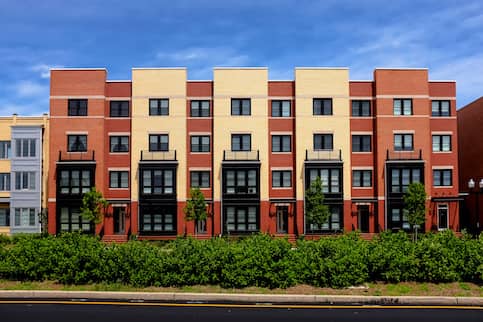How Condo HOA Controls Shared Spaces and Enhances Community Consistency
The governance of common spaces within a condominium organization plays a pivotal role in promoting community communication and maintaining residential property worths. Via the establishment of comprehensive standards, the Condo HOA not only manages the use of common features yet likewise advertises a culture of regard and responsibility among citizens. By dealing with possible disputes and assisting in open dialogue, the HOA can enhance the overall living experience. The performance of these strategies typically pivots on energetic participation and commitment from all members, elevating questions about the best techniques to accomplish enduring community consistency.
Function of the HOA
The homeowners association (HOA) acts as the controling body for condo neighborhoods, playing an important function in keeping the residential property and promoting a cohesive living setting. It is in charge of applying and passing neighborhood policies and laws, which are created to preserve the aesthetic worth and functionality of the common space. This governance makes sure that all locals abide by a standardized collection of expectations, promoting a sense of unity amongst diverse home owners.
In Addition, the HOA takes care of the monetary aspects of the neighborhood, including budgeting, gathering charges, and maintaining usual areas. This financial oversight is critical in guaranteeing that essential upkeep and renovations are accomplished without delay, improving residential property worths with time. The HOA likewise works as an intermediary between citizens and external entities, such as local federal government and solution carriers, resolving communal worries successfully.
In Addition, the HOA frequently arranges neighborhood occasions and programs, encouraging neighborly communications and building partnerships amongst citizens. By facilitating open communication and dealing with grievances, the HOA adds to an unified living setting. Hence, its multifaceted duty is vital in guaranteeing the smooth procedure and total contentment within condo neighborhoods.
Guidelines for Shared Rooms
Reliable administration in condominium communities demands clear guidelines for common rooms, which are crucial for keeping order and advertising a feeling of neighborhood amongst homeowners. These rules work as guidelines that guarantee everybody can enjoy usual locations, such as swimming pools, gardens, and entertainment centers, without conflict.

In addition, sanitation and maintenance criteria are crucial, often specifying that homeowners have to cleanse up after themselves and report any kind of problems to the home owners' organization. By clearly connecting these expectations, the HOA can decrease misunderstandings and motivate regard amongst residents.
Inevitably, well-defined rules for common rooms add to the overall quality of life in a condominium neighborhood, permitting locals to exist this content side-by-side in harmony while taking pleasure in the amenities that enhance their living experience. condo hoa.
Relevance of Neighborhood Standards

Neighborhood standards play a significant duty in fostering a considerate and cohesive environment within condominium associations. These guidelines develop clear assumptions for citizens, promoting a feeling of accountability and shared obligation. By delineating appropriate behaviors and methods, area standards help stop misunderstandings and problems amongst homeowners.
Additionally, these standards serve as a framework for maintaining the useful and visual honesty of shared spaces. They guarantee that all citizens comply with criteria relating to building upkeep, noise degrees, and use of common facilities. This harmony not only improves the visual charm of the community yet also contributes to overall building worths, profiting all home owners.
Problem Resolution Methods
Navigating conflicts within a condo association calls for an organized technique to guarantee fair and efficient resolution. Effective problem resolution methods commonly begin with open interaction, motivating citizens to voice problems in a respectful way. Establishing an assigned channel for complaints, such as an idea box or an online discussion forum, can promote this procedure.
Arbitration is another crucial method, where a neutral 3rd party aids contesting locals get to a mutually reasonable option. This technique cultivates partnership and understanding, decreasing hostility - condo hoa. The HOA board ought to likewise create clear treatments for resolving issues, making sure all parties know the actions involved
Normal dispute resolution training for board members can improve their ability to handle disagreements successfully. Using a well-defined framework, such as the "Interest-Based Relational Strategy," aids focus conversations on rate of interests as opposed to placements, advertising a solutions-oriented frame of mind.
Benefits of Community Consistency
Fostering neighborhood consistency within a condominium association brings numerous benefits that improve the general living experience for citizens. An unified neighborhood encourages partnership and cooperation among neighbors, causing a much more congenial ambience. When homeowners feel connected and reputable, they are most likely to take part in common tasks and get involved in decision-making processes, leading to a more powerful feeling of belonging.
Furthermore, area consistency significantly lowers problems and misconceptions, which can or else interfere with every day life. A serene environment minimizes anxiety and advertises mental wellness, permitting citizens to enjoy their homes completely. In addition, harmonious relationships typically equate into enhanced residential or commercial property worths, as possible purchasers are drawn to neighborhoods identified by security and teamwork.

Final Thought
With the establishment of clear regulations and neighborhood guidelines, residents are motivated to preserve a accountable and considerate environment. Inevitably, the initiatives of the HOA add to a cohesive community, promoting both residential or commercial property worths and total resident contentment.
Additionally, the HOA usually organizes neighborhood events and programs, urging neighborly interactions and constructing relationships amongst homeowners. By marking appropriate habits and methods, community guidelines aid prevent misunderstandings and problems among homeowners.
In addition, neighborhood standards assist in reliable interaction among citizens and the Homeowners Association (HOA) With the facility of clear rules and area standards, residents are motivated to preserve a considerate and responsible environment. Inevitably, the efforts of the HOA add to a natural neighborhood, promoting both home values and general resident contentment.